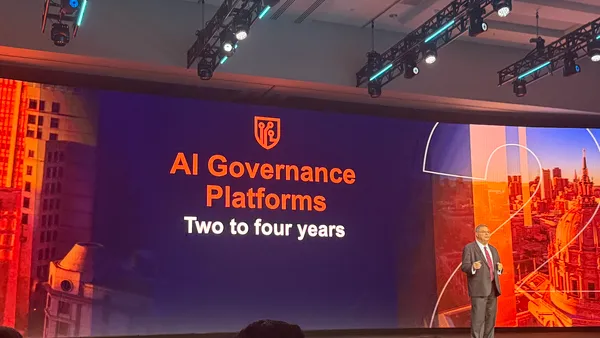Editor’s note: The following is a guest post from Fiona Mark, principal analyst at Forrester.
Every organization today is pressing its technology leaders to deliver more value while keeping costs in check.
The era of abundant tech budgets in 2020 and 2021, driven by pandemic-induced digital pivots and talent competition, contrasted sharply with the layoffs and budget constraints of 2022 and 2023.
To respond to these demands, tech leaders must find new paths to achieve high-performance IT — the pursuit of continuously improving business results through technology.
High-performance IT is not a one-size-fits-all approach — it is the alignment of the technology organization to key business outcomes. This process will require technology leaders to deliver in at least one, if not more, different styles. These styles are, in no particular order:
- Enabling: Stabilizing, operating and protecting the organization. This style focuses on ensuring that technology is optimized to deliver efficiently and with low cost.
- Co-creating: Creating new opportunities, products and lines of business in deep partnership with the business. Customer value is delivered through agile and continuous delivery.
- Amplifying: Leveraging technologies at scale to drive business optimization across the enterprise through technologies such as automation and AI.
- Transforming: Redefining how technology creates value for the business, through leveraging emerging technologies, driving innovation and seeking to disrupt existing standards and norms.
Leadership skills should adapt to business context
Just as technology leaders must shape their organization to deliver effectively in the styles most relevant to their business, they must also intentionally align their leadership skills and behaviors to the required style.
We all have examples of leaders who were great at driving transformational change but who floundered when their role evolved to driving stable and effective operations and vice versa — they weren’t bad leaders, but they did not effectively adjust their leadership skills to their new context.
There are relatively few leaders who will only have to lead in one particular style or context in their career.
Organizations evolve and change continually, so being able to flex leadership skills and recognize which ones apply in particular scenarios gives leaders a much stronger ability to lead their organizations through challenging scenarios.
Regardless of the scenario, there are key skills that are consistently required for all leaders: the ability to build trust with stakeholders, to effectively manage budgeting and to drive effective decision-making. Across the four styles, however, there are specific leadership attributes that become more valuable.
1. Enabling leaders must deliver effectively and predictably.
Enabling IT organizations need leaders who have exceptional technology operations skills, with a deep understanding of the technology stack and its relative dependencies across the organization.
They must have excellent financial acumen and strong partnerships with risk and security. Enabling organizations are still delivering change — and leaders must be able to do so in a highly predictable, consistent manner, with effective program management skills.
2. Co-creating leaders partner with the business to create value.
Leaders who are in a co-creating style build strong relationships with business stakeholders and have a robust understanding of customer needs and revenue and profit drivers.
These leaders have experience in product delivery, as well as agile, continuous delivery practices. They are constantly managing trade-offs and are experts in stakeholder management and negotiation.
3. Amplifying leaders scale impact across the organization.
Leaders who amplify the impact of tech are ramping up business delivery through technology investments in automation, AI and insights. They will have strong architecture, data and infrastructure experience, setting the technology strategy to take advantage of capabilities in process optimization and predictive modeling.
Executives in this space will be driving efforts to leverage and connect data sources and models across the organization to deliver efficiencies at scale.
4. Transforming leaders guide through intense change.
Leaders driving tech-led transformation must be able to inspire and motivate others into diving into the unknown while coupling that with the ability to unlock value through innovation.
Success here requires a strong sense of market dynamics to effectively leverage emerging technologies to create value, along with effective business partnerships to ensure that technologies are embedded in business strategy.
To truly deliver business value, technology leaders need to think beyond their own skill sets and focus on how they build the overall skill sets of their leadership team to ensure that gaps are closed out and that the team itself is best positioned to take their organization into the future.










